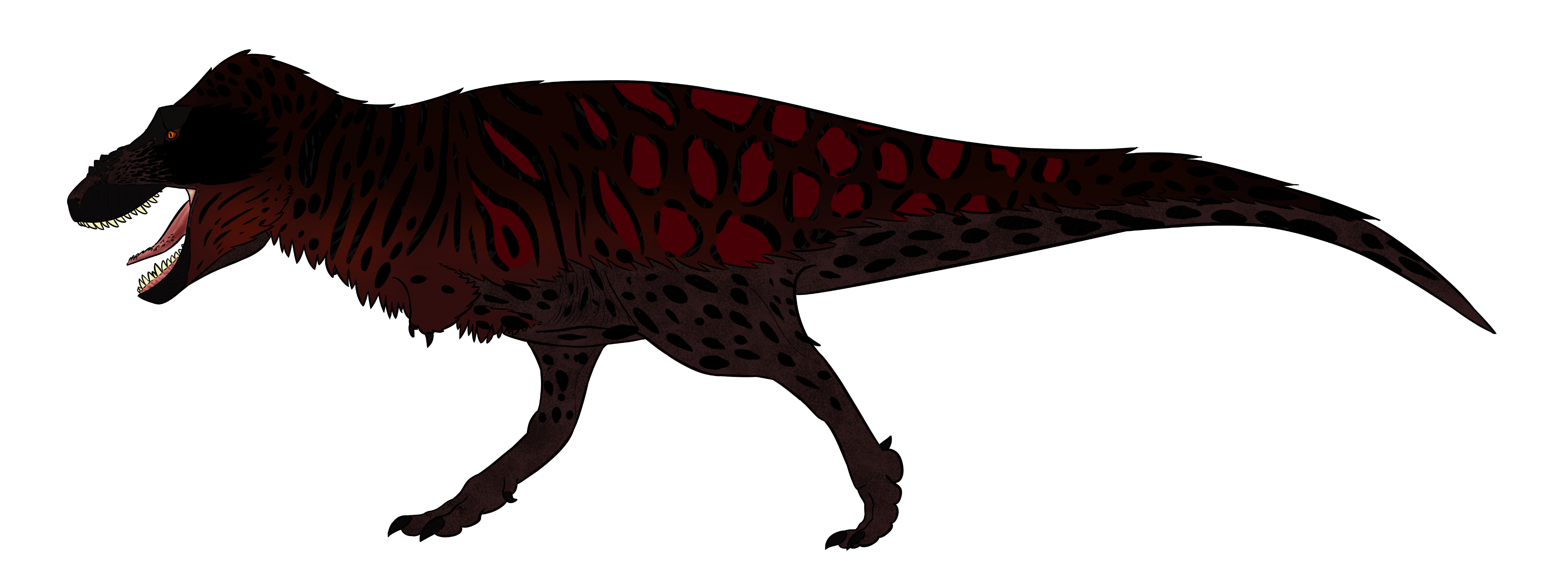Tyrannosaurus

|
|
|
A dinosaur that needs no introduction. Tyrannosaurus is the most famous of all non-avialan dinosaurs, and has been since it was named by Henry Fairfield Osborn in 1905. First thought to be closely related to other large theropods such as Allosaurus, later discoveries of other tyrannosauroids show it to be closer to birds. Dozens and dozens of fossil specimens are known, including some almost-complete specimens. Tyrannosaurus is huge and extremely robust - it weighs over five tons. Its skull can reach almost five feet long, and can deliver an absurdly strong bite. At 35,000 to 50,000 Newtons, it has one of the strongest bite forces ever. Unlike many theropods, its teeth are thick and robust, like serrated railroad spikes. The teeth and jaws are specialized for crushing, not shearing flesh. As almost everyone is quick to point out, its arms are proportionally tiny. They're strong, though - able to hold and theoretically lift over 500 pounds. The arms were being used for something - probably holding struggling prey. Tyrannosaurus's feet are built to absorb impact, and though it isn't a good runner it can sustain a speed of around 25 miles per hour. The senses of Tyrannosaurus are honed for hunting - it has binocular vision with good depth perception, a good sense of smell, and ears well-attuned to low-frequency sounds. Tyrannosaurus is a predator of the large herbivorous dinosaurs it lived with, including hadrosaurs and ceratopsids. It may have hunted in small groups, although they didn't always getalong, as evidenced by battle scars and evidence of cannibalism. Tyrannosaurus's growth patterns are eerily similar to those of humans. Juveniles grow slowly until 10-14 years of age, at which point growth increases dramatically until around 16-18, where it taper off with maturity. Young Tyrannosaurus are more slender and long-legged than adults. Evidently very common, Tyrannosaurus ranged form Alberta to New Mexico and lived in a variety of environments. Our Tyrannosaurus family consists of a mated pair (Dave and Athena) and their offspring (Ben and Aradia). They live in a large forested enclosure, one of Huxley Paleozoo's most popular exhibits. Dave and Athena are some of our older animals. |
Scientific name Location Time Length Diet |